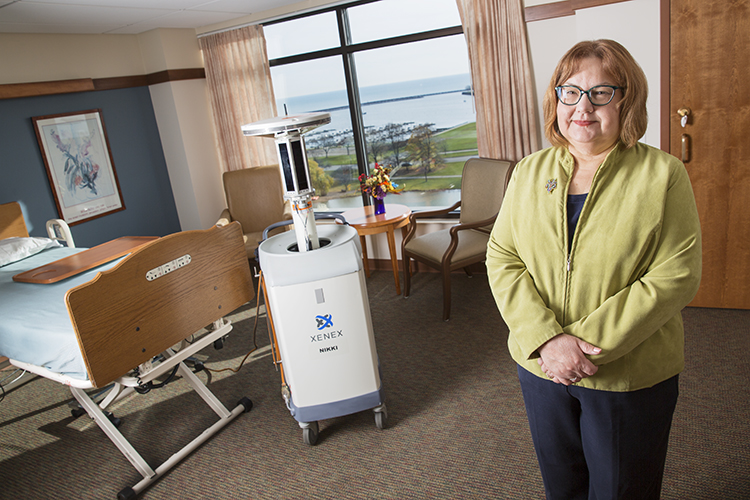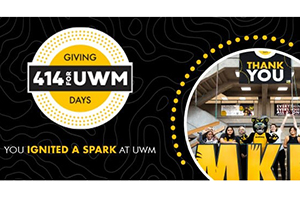Meet Nikki, one of the newest additions to the housekeeping staff at Milwaukee’s Jewish Home and Care Center. His name, fittingly enough, means “to clean” in Hebrew. He’s quiet, petite and 3 1/2 feet tall. His disinfecting skills have played a major role in reducing infection rates among Jewish Home residents.
Oh, and Nikki also happens to be a robot.
When Nikki is switched on, its head rises up out of its body, revealing a “neck” made of lamps that emit pulsed-xenon ultraviolet light. The light is so strong that humans must step out of the room. It kills any pathogen in a 12-foot radius and is used in conjunction with traditional cleaning.
UWM nursing Professor Christine Kovach, who holds a three-year research chair at the Jewish Home, has studied the robot’s germ-busting ability. “We’re the first nursing home in the country to test it,” Kovach explains.
Kovach’s team swabbed “high-touch surfaces,” including bedrails, call buttons and toilet seats, to check for bacteria. They retested after housekeeping staff cleaned items with detergent, and again after Nikki zapped the room. They found surprisingly few pathogens after traditional cleaning, but even fewer after the robot – developed by the Texas-based company Xenex – finished its 15-minute cleaning.
Kovach’s team then looked at infection rates in the facility before and after staff began using Nikki. Kovach reports that hospital-acquired infections rose among residents admitted to hospitals in that period, but infections contracted at the Jewish Home dropped significantly. “Nikki,” Kovach says, “really made a big difference.”




